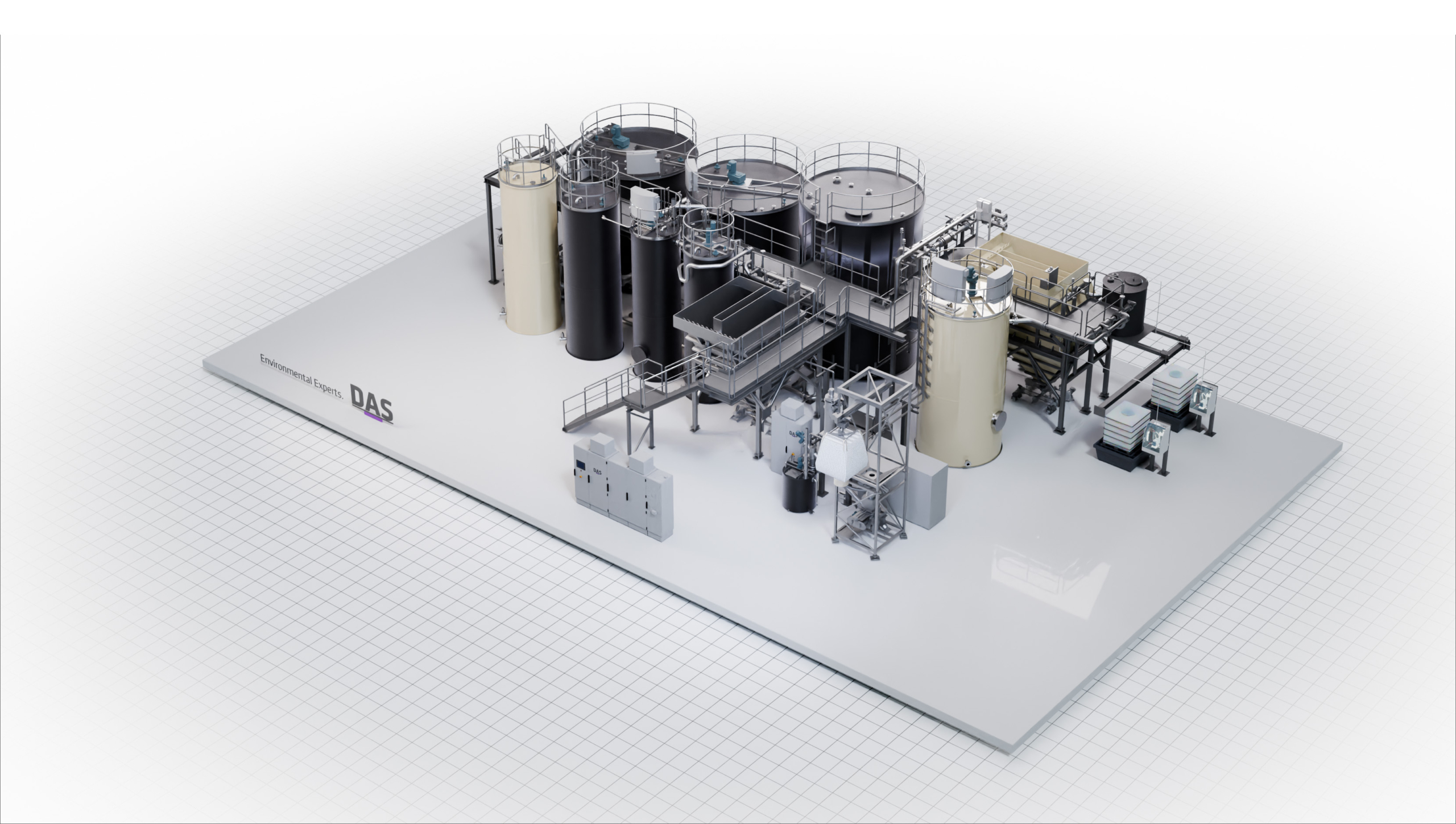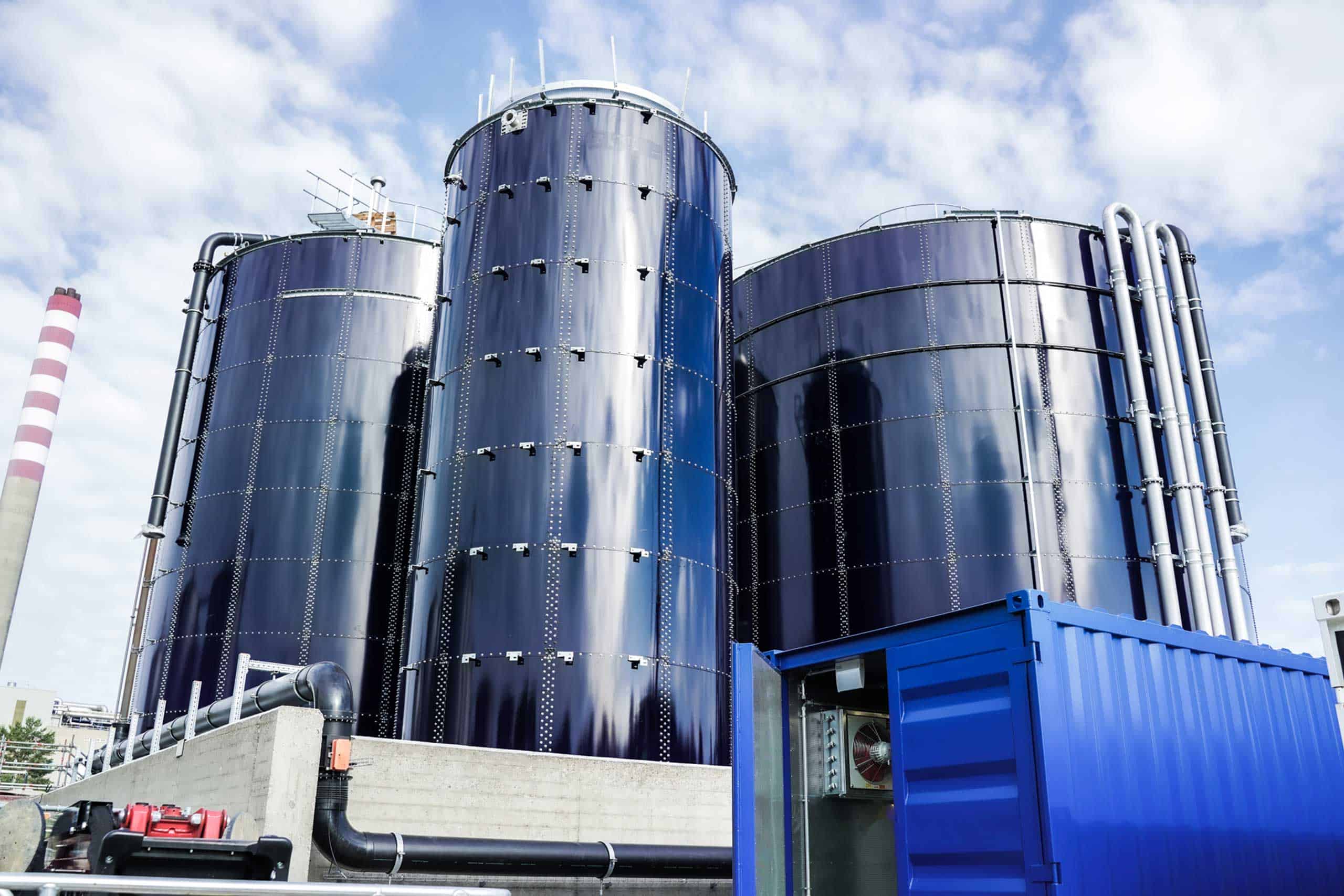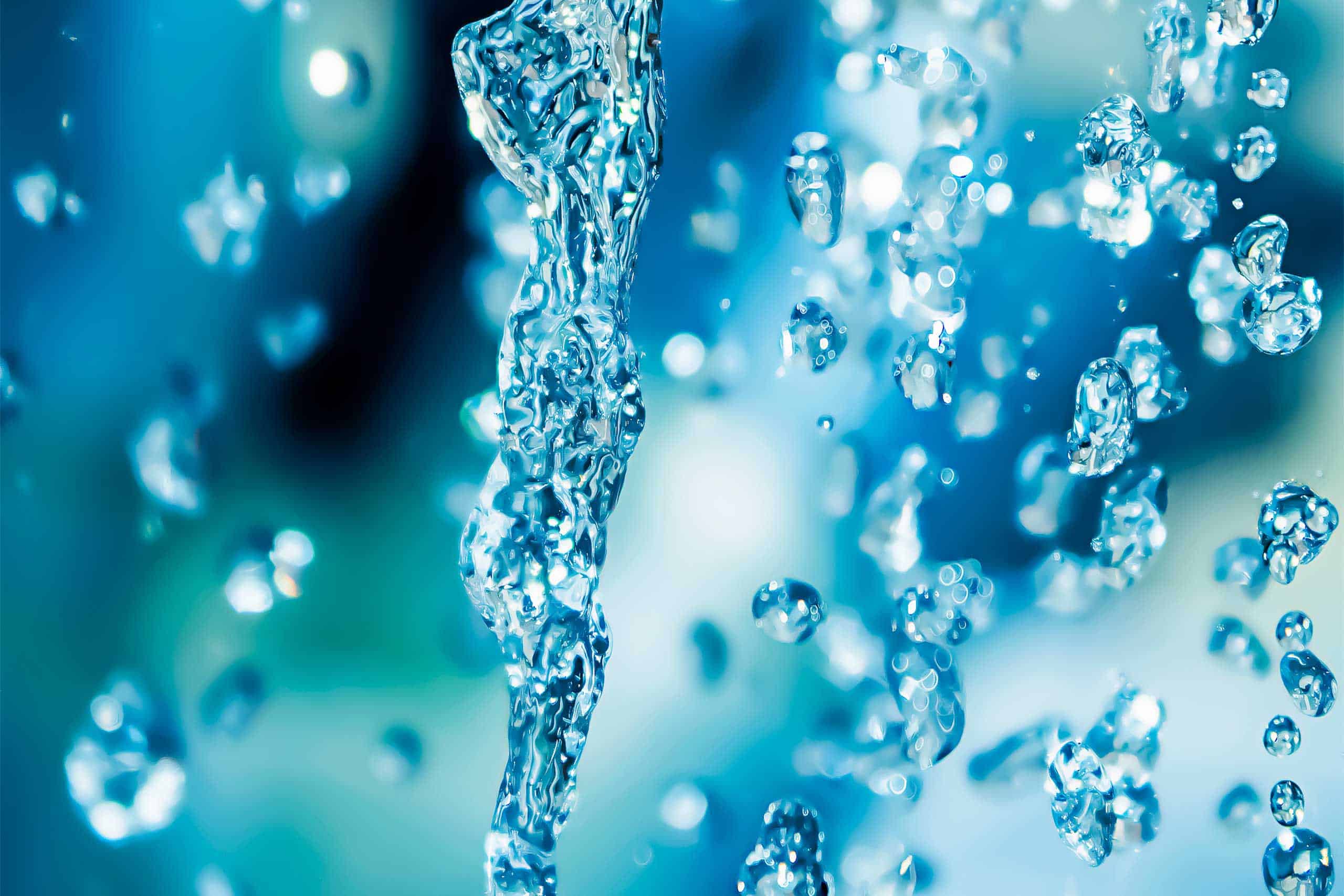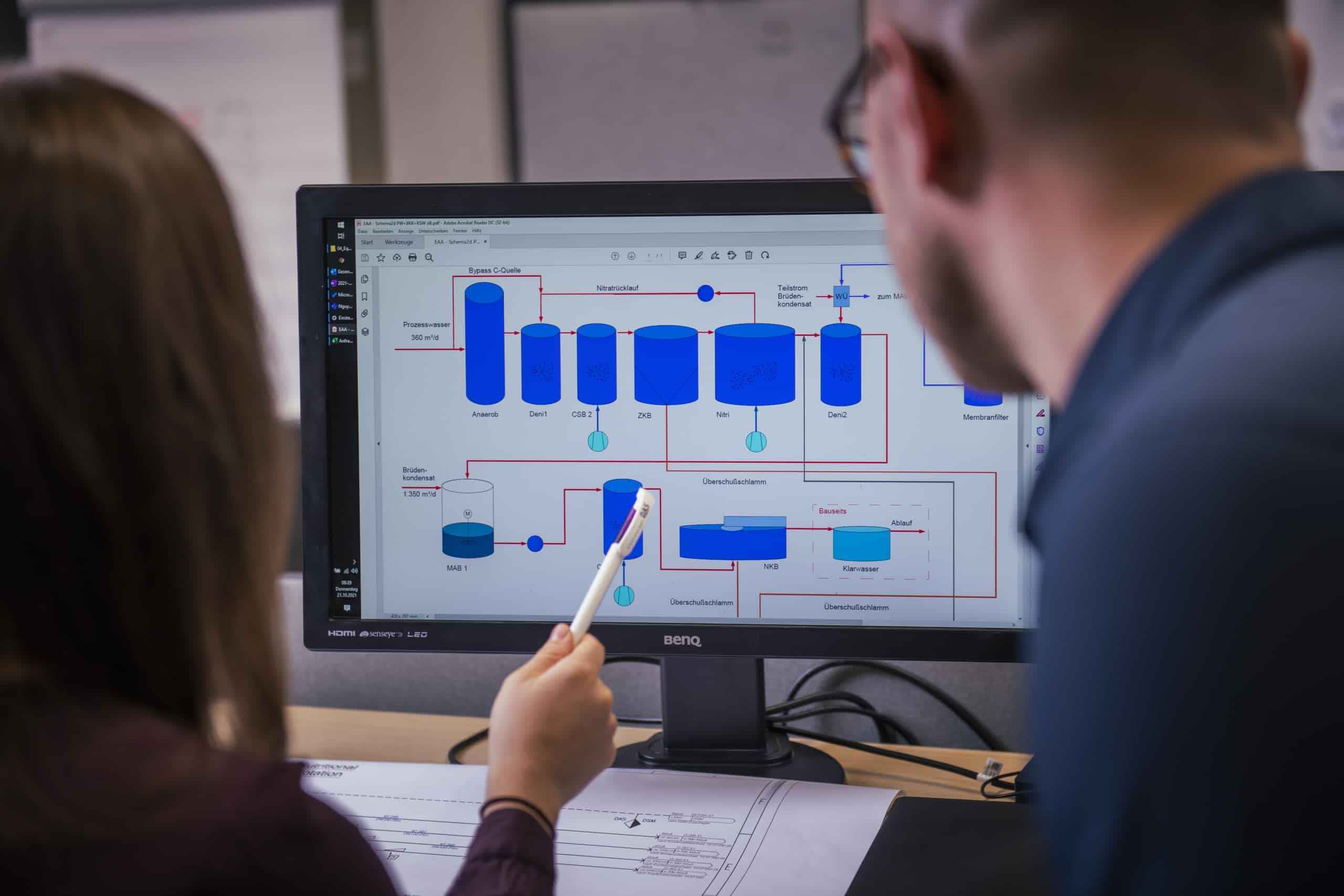Sustainable Wastewater Treatment Solutions for the Semiconductor Industry
DAS Environmental Experts offers customised, sustainable wastewater solutions and reprocessing concepts for the semiconductor industry. With high quality standards and customized project management, we are your reliable partner.
Water is a vital resource for humans, animals and plants, but only just under three percent of the world’s water reserves are freshwater. Large parts of this usable freshwater are inaccessible due to natural conditions and anthropogenic influences. The latter include water pollution, overuse, loss of forests and peatlands as important water reservoirs and increasing urbanisation. These man-made changes affect the natural water cycle and have far-reaching consequences, including river changes, land use change and climate impacts. At the same time, the demand for freshwater is continuously increasing worldwide, particularly due to population growth, industrial development and climate change. According to UN forecasts, the world’s population will grow to around 9.7 billion people by 2025.
According to estimates, annual global freshwater consumption is already around 4 — 4.5 trillion cubic metres (4000 — 4500 cubic kilometres) per year. Germany alone has an annual water consumption of around 219 billion cubic metres, with industry, agriculture and private households being the main consumers. At the same time, the water infrastructure in many parts of the world is outdated and urgently requires investment. As a major consumer of water resources, the semiconductor industry faces the global challenge of optimising its water requirements and using innovative wastewater treatment technologies to reduce the strain on freshwater resources and ensure the sustainable use of this vital resource.
Water in the Semiconductor Industry
The production of microprocessors on silicon wafers is energy-intensive and consumes large quantities of water, chemicals and gases. In addition, hazardous waste such as heavy metals, acids and solvents are produced, which can cause environmental damage if they are not disposed of properly. In the production process, the silicon wafers pass through more than 1000 individual process steps in the clean room and must be cleaned regularly. Ultrapure water (UPW) is used for these cleaning processes.
Ultrapure water is also used in etching processes to remove excess etchant and neutralise any chemical residues. Both in the cleaning processes and in the etching process itself, the water is contaminated by various chemicals and process gases such as nitric acid, sulphuric acid, hydrogen fluoride, ammonia, hydrogen peroxide, isopropanol and particles from the various phases of chip production and must undergo extensive purification.
Three Decades of Experience in Industrial Wastewater and Waste Gas Treatment
With over 30 years of experience in industrial wastewater and waste gas treatment, DAS Environmental Experts epitomises German precision engineering and quality manufacturing. Our proven and scalable solutions provide reliable wastewater treatment for the specific requirements of high-tech manufacturing as well as numerous other industries such as food and beverage, chemical, pharmaceutical and cosmetics.
Our project approach encompasses the individual requirements of our customers, from wastewater volume and composition to specific requirements for energy and chemical use, footprint and other design requirements, as well as effluent quality for recycling, indirect and direct discharge. By prefabricating the plant components in Dresden, we guarantee the highest quality and efficiency.

One stop solutions
Our comprehensive range of services covers all areas: from consulting (including laboratory and pilot tests) to planning, plant construction, commissioning, optimization and maintenance of wastewater treatment plants. Our wide range of biological, mechanical and chemical-physical processes enables us to reduce the specific pollutants in our customers’ process, industrial and waste water to acceptable levels for discharge or recycling.
This includes:
- Removal of organic contaminants
- Removal of heavy metals or other toxic compounds
- Treatment of chemical-mechanical polishing/planarisation waste water (CMP)
- Treatment of grinding residues
- Treatment of waste water containing fluoride and arsenic
- Treatment of isopropanol (IPA) or other volatile organic compounds (VOCs)
- Reuse of treated waste water (water recycling)
- Recovery and recycling of valuable metals from waste water
Use of Biological Wastewater Treatment in the Semiconductor Industry using the example of the Moving Bed Biofilm Reactor (MBBR)
A Moving Bed Biofilm Reactor (MBBR) is a biological reactor that is capable of removing a wide range of organic contaminants from industrial wastewater due to its flexibility and efficiency. It offers good performance in the removal of nitrogen and phosphorus compounds as well as in the removal of organic compounds represented as COD/BOD/TOC. The process is robust, user-friendly, easily scalable and can therefore be adapted very well to specific customer requirements. The use of carrier material and the associated very high sludge age is ideal for adapting to a wide range of organic substances, including those that are difficult to degrade. As it is not activated sludge, less excess sludge is also formed, which reduces operating costs.
MBBR Plant
for Multi-Stage Biological Treatment of Wastewater from Etching Processes
YouTube is a service of YouTube LLC, a subsidiary of Google Inc, USA. You can find more information on data processing through this in our privacy policy. If you would like to watch this video, you also consent — revocable at any time — to the transfer of your data to the USA and the associated data processing in accordance with Art. 49 (1) a) DSGVO.
Carrier material
The MBBR contains loosely packed plastic carrier material, which serves as a surface for the colonisation of specialised microorganisms. These free-floating carrier materials have a large surface area to enable a high biomass concentration. The microorganisms are responsible for the degradation of both organic wastewater constituents and nitrogen compounds and, due to the very long residence time in the wastewater and the resulting selective specialisation as well as the protected space in the growth bodies, ensure that the MBBR process is significantly more stable and adaptive than other biological treatment technologies.
Oxygenation and mixing
Air is blown into the reactor to provide oxygen and supply the microorganisms with nutrients. Due to the lower solids content compared to activated sludge processes, the oxygen input is very efficient. At the same time, aeration ensures mixing of the wastewater and the carrier materials in the reactor.
Biofilm growth
Microorganisms in the wastewater, such as bacteria, attach themselves to the surface of the carrier materials and form a biofilm. This biofilm contains a variety of organisms that can break down organic compounds in the wastewater.
Degradation of pollutants
The microorganisms in the biofilm break down organic compounds and other pollutants in the wastewater by using them as a food source. This degradation takes place through biochemical processes such as aerobic and anaerobic respiration and denitrification.
Purification
After the microorganisms have broken down the pollutants, the purified water flows out of the reactor. Most of the biomass remains in the reactor and can be used for the biological degradation of further pollutants. As the biomass is not present as activated sludge, there is also less excess sludge at the end.
DAS EE has many Years of Experience with MBBR in various Industries.
For the utilization of this technology in the semiconductor industry, we recommend the following technological process combination as an example:
- One mixing and balancing tank for buffering & conditioning (pH adjustment, addition of necessary nutrients, H2O2 catalysis)
- Two aerobic MBBRs for COD degradation and nitrification
- One anoxic (dissolved oxygen-free) MBBR for nitrate degradation
- Flotation for solids separation
- Sludge presses for sludge dewatering
Membrane Bio Reactor (MBR)
Another wastewater treatment method that can be used in the semiconductor industry is the Membrane Bio Reactor (MBR). Here, the activated sludge process is combined with membrane filtration to retain particles and activated sludge before the biologically treated wastewater is discharged.
The wastewater is first fed into a biological reactor containing micro-organisms. These organisms play a key role in the degradation of organic contaminants in the wastewater and, unlike the MBBR, are not present as a biofilm but as activated sludge and therefore in the form of flocs suspended in the wastewater. Anaerobic, anoxic and aerobic tanks or zones are also used to exploit the characteristics of different micro-organisms in the biocenosis. However, unlike MBBR, these pass through all stages rather than remaining in one zone.
To maintain the activity of the aerobic organisms, air is injected into the reactor, allowing their aerobic growth and accelerating the degradation of pollutants. Anaerobic or anoxic zones are mixed without the introduction of air. The treated wastewater then passes through membrane filtration in the MBR system. Special membranes are used to effectively retain particles and activated sludge.
Periodic backwashing of the membranes is required to remove deposits and blockages, usually by reversing the water flow or using chemical cleaning methods. Depending on the level of fouling, alkalis, acids or even enzymatic cleaners and chlorine-based hypochlorite are used. The activated sludge is recirculated to the upstream parts of the plant to avoid a critical concentration in the membrane chamber. The excess sludge produced during the process is also removed from this recirculation. Finally, depending on the application, the purified water can be reused or discharged to the central sewerage system.
Alternatively, it can be subjected to further purification processes to achieve higher levels of purity. The advantages of this process include the absence of solids in the effluent, potentially lower reactor volumes due to higher activated sludge concentrations, easy stepwise increase in filtration capacity and a smaller footprint for solids separation compared to gravity sedimentation.

Chemical-physical Wastewater Treatment in the Semiconductor Industry
Chemical-physical wastewater treatment is a combination of different processes to remove heavy metals, organic compounds, acids and bases as well as particles from the process water. Depending on customer requirements, our team of experts decides which of the processes to combine in order to achieve optimum results.
Solution for Chemical-Physical Wastewater Treatment

DAS EE offers the following Procedures:
Filtration
Filtration is a mechanical process for separating solids from liquids. Membrane filtration in the form of microfiltration, ultrafiltration, nanofiltration and reverse osmosis, which can retain particles and molecules of a defined size, is particularly suitable for use in the semiconductor industry. This process can also be used to remove colloidal substances and bacteria and desalinate the water.
Flotation
During flotation, dispersed or suspended substances are removed from liquids with the help of coagulants such as aluminium sulphate or ferric chloride as well as flocculants. The process effectively contributes to the removal of particulate impurities from other treatment steps such as activated sludge separation from the MBBR before the water is subjected to further purification processes.
Sedimentation
Sedimentation is used to separate solid particles by gravity in shallow, virtually flow-free tanks. The tanks are usually designed according to residence time. This means that the water must remain in the tank until the particles have sunk. The higher the sinking speed, the smaller the sediment. Depending on the particle size, sedimentation is a robust, low-energy and simple process for separating solids by utilising gravity. By using lamella clarifier, this can be further optimised in terms of space.
Oxidation/Reduction
Oxidation processes are used, among other things, to remove organic compounds that are difficult to biodegrade, particularly effectively through photochemical purification with hydroxyl radicals from hydrogen peroxide or ozone using UV light. These Advanced Oxidation Processes (AOP) reliably destroy trace substances. This process can also be used to break down so-called heavy metal complexes.
Adsorption and Chemisorption
Adsorption is the accumulation of substances on the surface of a solid body, typically through van der Waals forces. Chemisorption, in which substances are bound to the surface by chemical bonds, is often irreversible in contrast to adsorption. The adsorbent activated carbon has the ability to bind a variety of substances to its porous surface. As a result, organic compounds such as PFAS (per- and polyfluorinated alkyl substances) and other dissolved substances can be effectively bound from the wastewater. Doped activated carbon and iron hydroxide granules are used to remove arsenic and heavy metals by reacting with the pollutants.
Neutralization
Neutralization is used to adjust the pH value. Acids or bases are added as required, particularly after processes such as precipitation and flocculation. It can also be used before the biological process to set a neutral pH value so that the bacteria are not destroyed.
Precipitation
Precipitation is a chemical process for separating a previously soluble substance from a fluid. Heavy metals are typically precipitated by adding suitable substances to convert them into sparingly soluble metal hydroxides. Anions such as fluoride ions can be precipitated by reactions with calcium, iron or aluminium salts. Iron and aluminium salts can also be used for phosphate precipitation.
Flocculation
Flocculation removes the finest particles from the water, which are present in suspension or as colloidal solutions. Using suitable chemicals called flocculants and flocculation aids, these particles can be agglomerated to form macro-flocs that sediment. This improves the settling properties and dewatering of residues.
Ion Exchanger
Ion exchangers are materials that can replace ions in a solution with other ions. For example, calcium ions can be replaced by sodium ions. When the ion exchanger is exhausted, it must be regenerated. Ion exchangers are used for the targeted removal of heavy metals and ions, e.g. as a “police filter” after precipitation/flocculation. They are also used for softening, re-salination and demineralisation of water. In the semiconductor industry, they are crucial for the production of extremely pure, demineralised water (ultrapure water).



